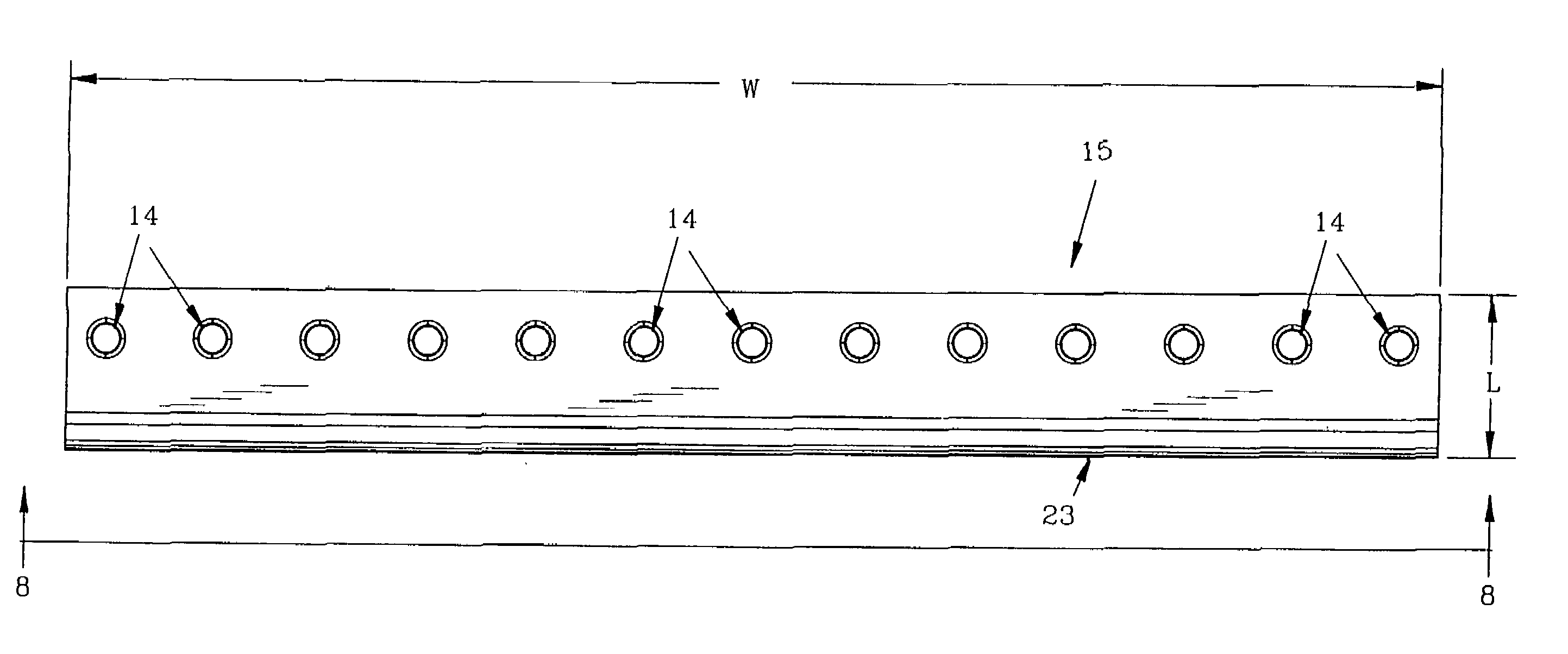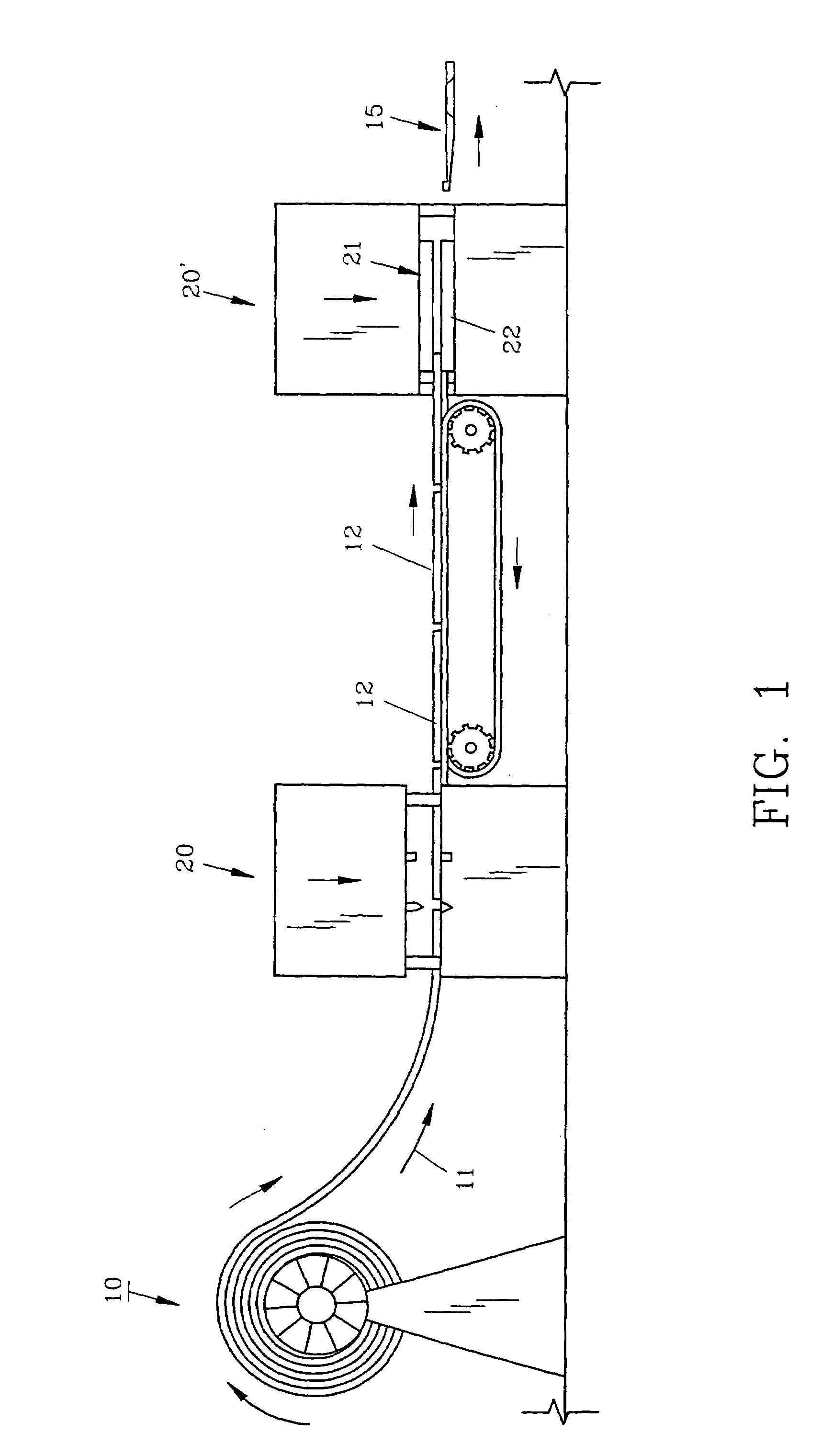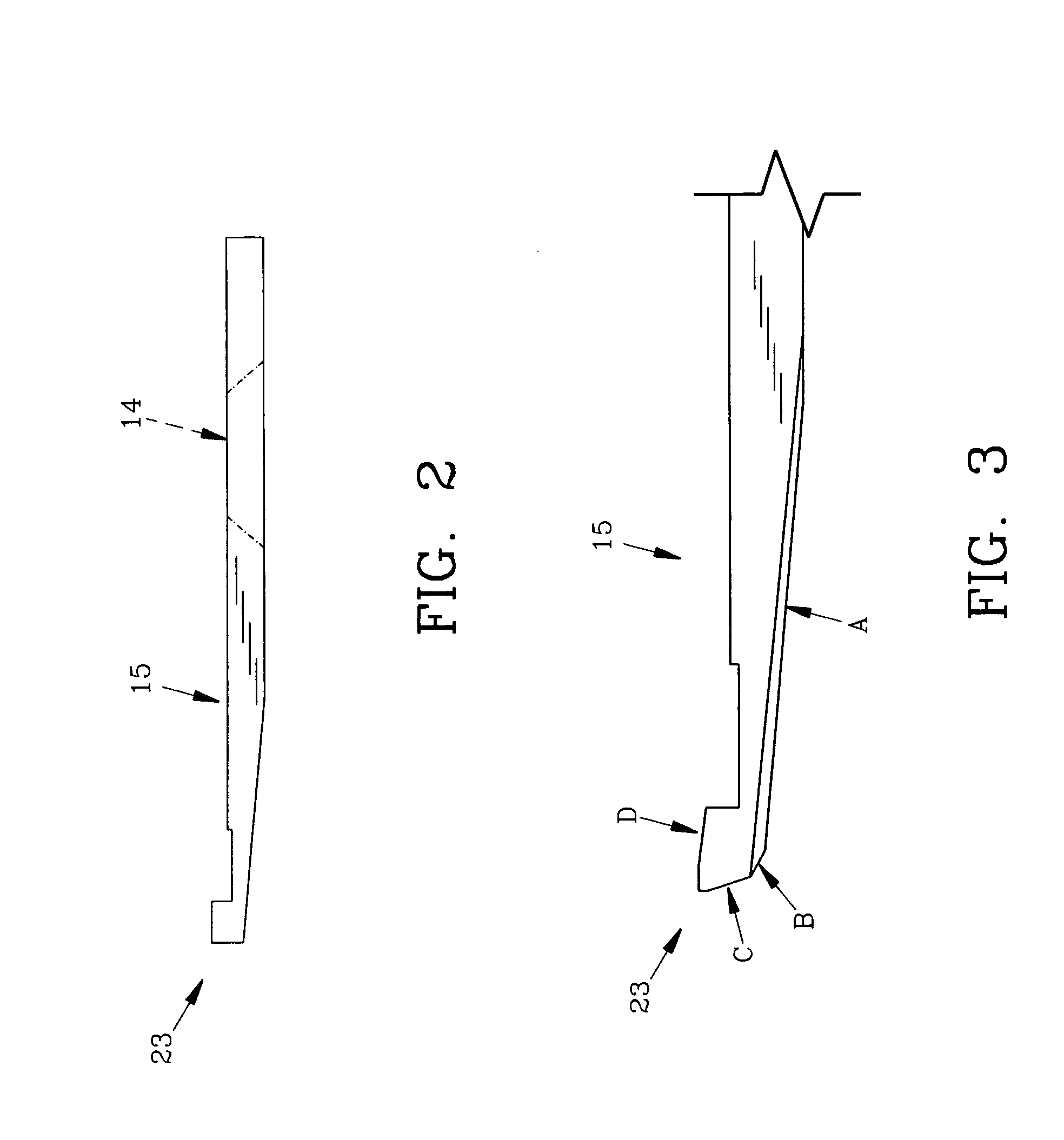Mower bed blade method
a mower bed and blade technology, applied in the field of mower bed blades, can solve the problems of requiring replacement, sharpening and removing the mower blades, requiring a lot of time, energy and expense, and often cracking or chipping along the lateral edges, so as to achieve the effect of rarely chipping or cracking
- Summary
- Abstract
- Description
- Claims
- Application Information
AI Technical Summary
Benefits of technology
Problems solved by technology
Method used
Image
Examples
Embodiment Construction
[0029]For a better understanding of the invention and its operation, turning now to the drawings, FIG. 1 shows in schematic representation certain steps of the preferred process for manufacturing mower bed blades. Coil 10 of preferably, grade 1566 (AISI-SAE1566) flat steel (UNS No. 615,660) having a carbon (c) content of; 0.60–0.71%; manganese (mn) 0.85–1.15%; phosphorous (p) 0.040% and sulfur (s) 0.050% is utilized. While other steels can be used, this particular alloy is preferred. Steel coil 10 has a width of 21.75 inches (552.45 mm) and a thickness of 0.134 inches (3.3 mm) with the grain running in the direction of the length of the coil as indicated by arrow 11. Dake hydraulic press 20 as manufactured by Dake, division of JSJ Corporation of 724 Robbins Road, Grand Haven, Mich. 49417, having a capacity of 400 tons, shears the leading edge of coil 10 into blade blanks 12 measuring 2.5 inches (63.5 mm) long (not shown to scale in FIG. 1). Press 20 cuts coil 10 into blanks 12 using...
PUM
| Property | Measurement | Unit |
|---|---|---|
| angle | aaaaa | aaaaa |
| temperature | aaaaa | aaaaa |
| temperature | aaaaa | aaaaa |
Abstract
Description
Claims
Application Information
 Login to View More
Login to View More - R&D
- Intellectual Property
- Life Sciences
- Materials
- Tech Scout
- Unparalleled Data Quality
- Higher Quality Content
- 60% Fewer Hallucinations
Browse by: Latest US Patents, China's latest patents, Technical Efficacy Thesaurus, Application Domain, Technology Topic, Popular Technical Reports.
© 2025 PatSnap. All rights reserved.Legal|Privacy policy|Modern Slavery Act Transparency Statement|Sitemap|About US| Contact US: help@patsnap.com



